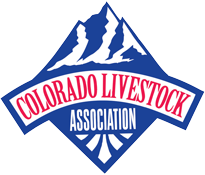Livestock stakeholders,
As you are aware, wildfires are currently burning across many areas of Colorado. The impacts of these wildfires are wide-reaching and they include impacts to agriculture and livestock. To see a map of the current wildfires in Colorado, please visit: www.colorado.gov/dfpc/current-wildfires
If you have deceased livestock, please contact the Colorado Department of Agriculture State Veterinarian’s Office at 303-869-9130. We will provide guidance on carcass disposal and coordinate with public health. Wildfire injuries in livestock should be addressed by a veterinarian. Please contact our office if you are unable to locate a veterinarian in your area.
Common trauma to animals include:
- Burned eyes, feet, udders, sheaths, and testicles
- Smoke inhalation with lung inflammation and edema
- Trauma can lead to secondary infections
Assessment for Livestock:
It can be challenging to assess a burned animal because the depth and severity of the burn may be difficult to ascertain; the animal may not appear distressed or painful. It may take days to two weeks for burns to become apparent, especially those on the hooves. Reassess on a daily basis! The severity of the burn and the compromise in the health of animals will become apparent. It is difficult to judge burned animals initially, but the burned areas of skin become leather-like and slough in 5-14 days, while systemic signs may worsen. Animals which go off-feed require careful examination for complications.
Livestock triage:
- Emergency euthanasia for severely burned animals that are in shock and have a large percentage of burn trauma
- Emergency euthanasia includes captive bolt gun, gunshot by firearm, and barbiturate overdose (licensed veterinarian only). See the AVMA Guidelines on the Euthanasia of Animals for species-specific guidelines.
- Burn shock is treated by intravenous fluids, balanced electrolytes, and possibly plasma
- Smoke inhalation may lead to cough, labored breathing, and pulmonary edema
- Inhalation of hot gases may cause a cough with frothy material discharge from the nose
- Burns may be treated topically with silver sulfadiazine; desitin may be an alternative
- Treatment of pain with approved pain medications, such as anti-inflammatories
- Antibiotic treatment may be beneficial for deep burns with or without contamination
- Keep the wounds as clean as possible; debridement or trimming is difficult with large numbers of affected animals and no sterile hospital setting
- Initial burn injuries will continue to progress and may worsen for up to six weeks following the initial injury. Debride dead tissue, treat, and protect exposed areas during healing. Protect the wounds from fly strike with appropriate repellants.
- Lack of appetite or inability to chew along with impaction or other disorders of gastrointestinal tract can be seen when the head and face are burned. Soaking feed with water allows for easier eating.
Livestock handling:
- Only experienced livestock handlers should be handling animals during highly stressful events.
- Livestock reactions can range from nervousness to panic to aggressive attempts to escape anyone and anything.
- Traumatic events often leave animals in a heightened state of awareness beyond the time frame of the actual incident.
- Normal handling techniques may be ineffective with livestock who are still traumatized from a recent wildfire; this can be especially true if the wildfires have passed but are still burning within the sensory range of the animal.
Protecting and treatment of livestock from smoke particulates:
- Limit stress during movement if smoke is visible. Don’t force livestock to perform activities or exertion that increase the airflow in and out of the lungs. This can trigger bronchoconstriction.
- Provide plenty of fresh water near feeding areas. The consumption of easily accessible water keeps the airways moist and facilitates clearance of inhaled particulate matter. This allows the trachea, bronchi, and bronchioles to remove inhaled particulate material in smoke.
- Limit dust exposure by feeding low or dust-free feeds and sprinkling or misting the livestock holding area. This reduces the particles in dust such as mold, fungi, pollens, and bacteria.
- If livestock is coughing or having difficulty breathing, an examination by a veterinarian is warranted to determine if it is a reactive airway from smoke and dust versus bacterial infection and pneumonia.
- Airway damage resulting from smoke-induced insult may take 4 to 6 weeks to heal. Plan to give livestock enough time to recuperate after the air quality returns to normal. Attempting to move and handle cattle may aggravate the condition, delay the healing process, and compromise the performance of livestock.
This information was provide to the Colorado Livestock Association by the Colorado State Veterinarian’s office. If you have questions, please contact their office at 303-869-9130.
To download this information from the State Veterinarian’s Office click here.
